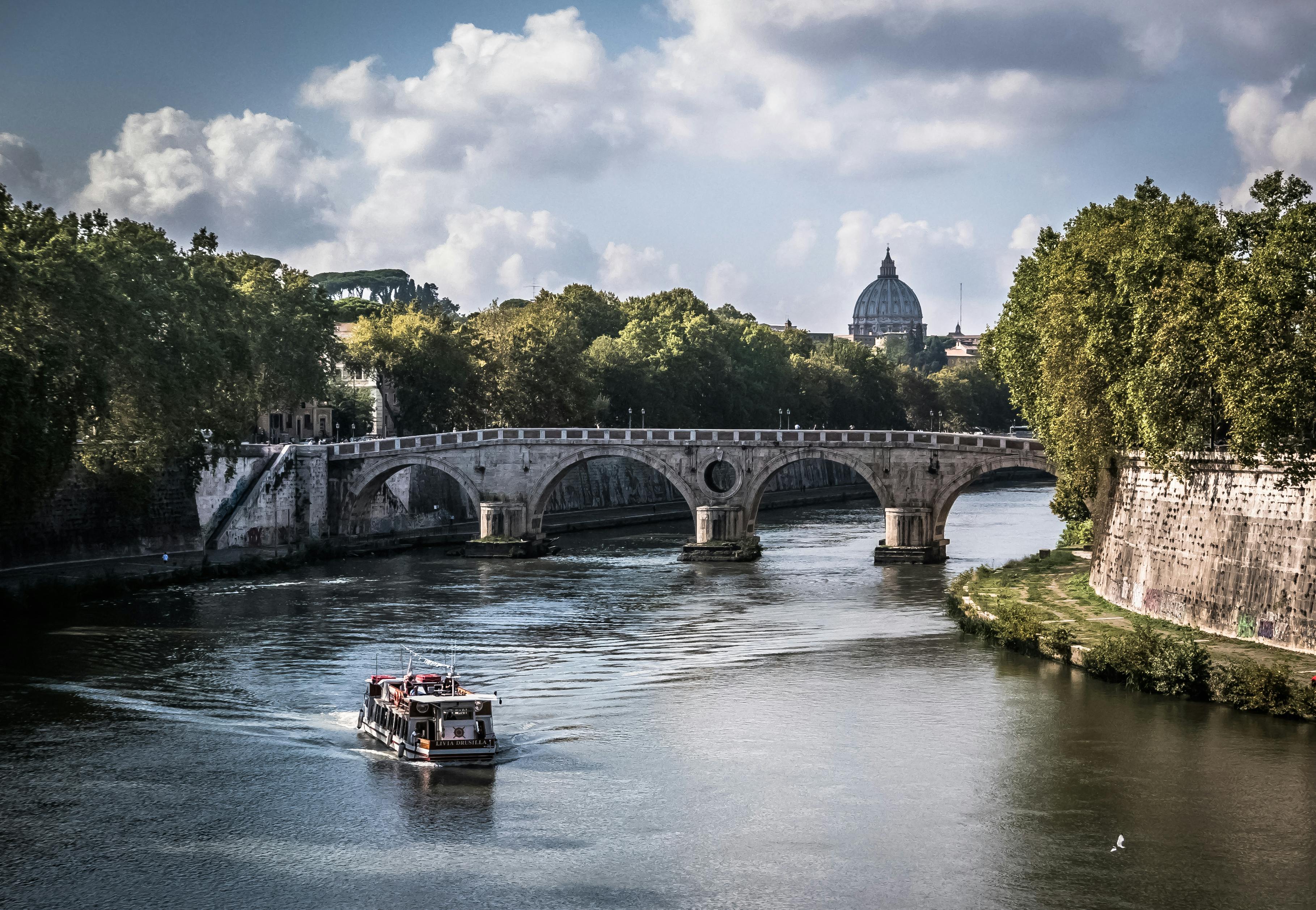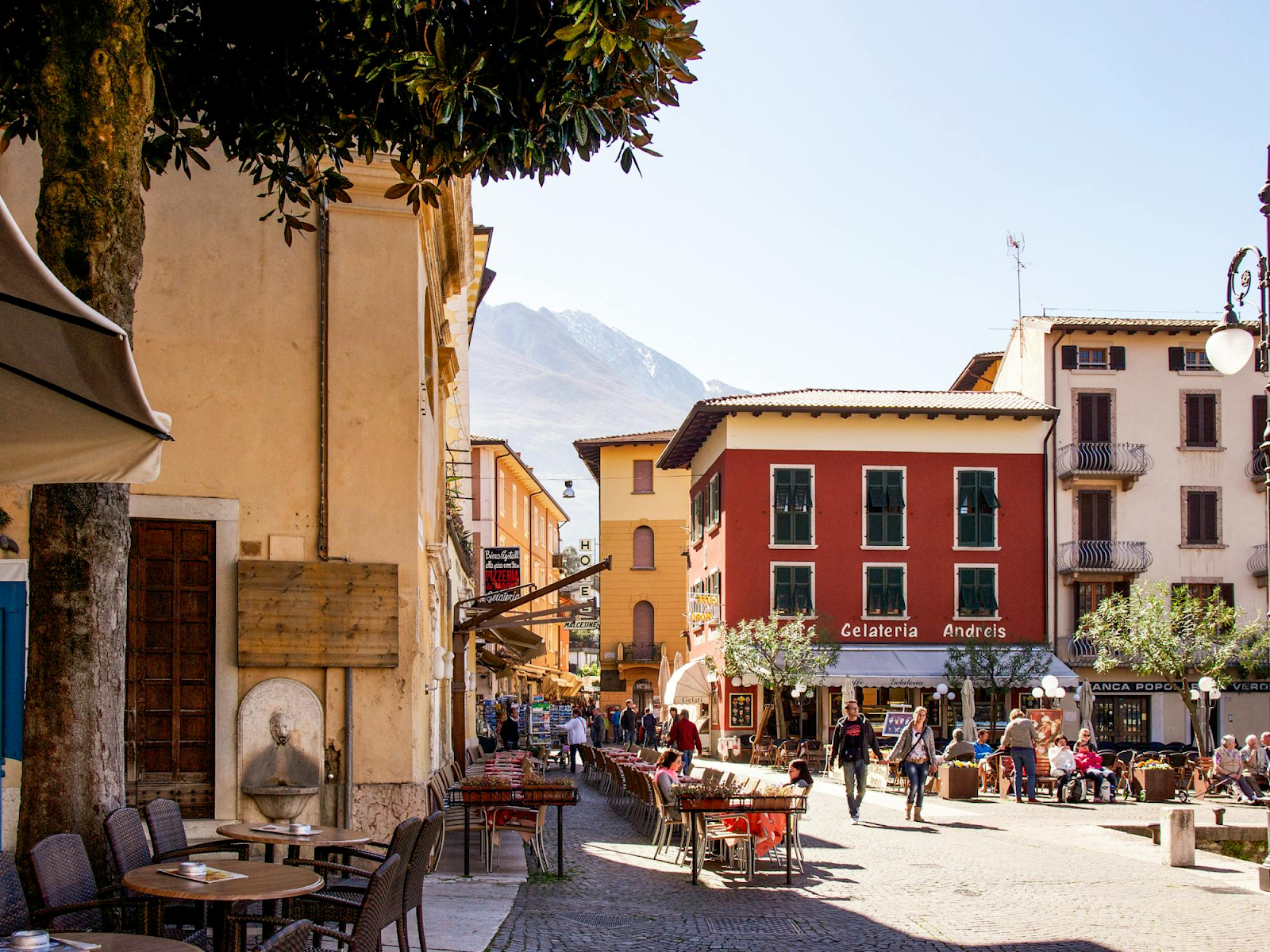Posted by on 03 Oct 2025
Planning the perfect Europe holiday requires understanding how dramatically the continent transforms throughout the year. From sun-drenched Mediterranean beaches in summer to snow-covered Christmas markets in winter, each season offers unique advantages and distinct experiences. This comprehensive Europe travel guide will help you determine the best time to visit Europe based on your travel preferences, budget and desired experiences.
Spring in Europe: Awakening Beauty and Mild Weather
Spring (March to May) represents one of Europe's most enchanting seasons, when the continent shakes off winter's grip and bursts into colourful bloom. Europe weather during spring is pleasantly mild, with temperatures ranging from 10-20°C across most regions. This season offers excellent value for travellers seeking comfortable conditions without peak-season crowds.
March to May Weather Patterns
Expert Travel Tip: Pack layers for spring travel in Europe, as temperatures can fluctuate significantly between morning and evening, particularly in northern regions like Scandinavia and the Baltic states.
Spring weather varies considerably across Europe's diverse climate zones. Mediterranean destinations like southern Spain and Greece enjoy warm, sunny days perfect for sightseeing, whilst northern countries such as Denmark and Finland are still emerging from winter. The shoulder season pricing makes this period particularly attractive for budget-conscious travellers, with accommodation costs typically 20-30% lower than summer rates.
Central European cities like Prague, Vienna and Budapest showcase their architectural beauty against backdrops of flowering trees and emerging greenery. The famous tulip season in the Netherlands peaks in April, creating spectacular displays at Keukenhof Gardens and throughout the Dutch countryside.
Spring Festivals and Cultural Events
Spring brings numerous festivals celebrating renewal and tradition across Europe. Easter celebrations are particularly magnificent in Mediterranean countries, with elaborate processions in Seville's historic streets drawing thousands of visitors. Greece celebrates Orthodox Easter with distinctive customs, whilst countries like Poland and Czech Republic maintain centuries-old traditions.
The season also marks the beginning of outdoor concert series and cultural festivals. Cities gradually extend their opening hours, and outdoor dining returns to European squares and terraces.
Spring Travel Advantages | Considerations | Best Destinations |
Lower accommodation costs | Variable weather patterns | Mediterranean coast, Netherlands, Central Europe |
Fewer crowds at major attractions | Some attractions have limited hours | Vienna, Prague, Seville, Amsterdam |
Comfortable walking temperatures | Rain showers common | Tuscany, Provence, Greek islands |
Summer in Europe: Peak Season Splendour
Summer (June to August) represents Europe's peak travel season, when the continent comes alive with festivals, outdoor activities and perfect weather conditions. This Europe travel guide wouldn't be complete without acknowledging summer as the most popular time for Europe holidays, despite higher costs and increased crowds.
June to August Climate Conditions
Europe weather during summer provides ideal conditions for exploring the continent's diverse landscapes. Mediterranean regions experience hot, dry weather with temperatures often exceeding 30°C, making them ideal for beach holidays and island hopping. Northern European countries enjoy their warmest months, with Scandinavia experiencing the famous white nights where daylight extends well into the evening hours.
Expert Travel Tip: Book accommodation and flights at least 3-4 months in advance for summer travel to Europe, as popular destinations fill up quickly and prices increase significantly closer to departure dates.
Central European cities bask in warm temperatures ideal for walking tours and outdoor dining. Countries like Germany, Austria and Switzerland offer perfect hiking conditions in their mountainous regions, whilst coastal areas from Portugal to Croatia provide excellent swimming and water sports opportunities.
Summer Festivals and Events
Summer transforms Europe into a festival paradise, with world-renowned events taking place across the continent. The Edinburgh Festival Fringe, Glastonbury and countless music festivals attract visitors from around the globe. Portugal's vibrant summer festivals showcase the country's rich cultural heritage through music, dance and traditional celebrations.
Mediterranean islands like Santorini offer peak-season attractions with perfect weather for exploring ancient ruins and enjoying spectacular sunsets. The Greek islands, Italian coastal regions and Spanish beaches operate at full capacity, offering comprehensive services and activities.
Managing Summer Crowds and Costs
Summer travel requires strategic planning to manage higher costs and crowds. Accommodation prices can increase by 50-100% compared to shoulder seasons and popular attractions often require advance booking. However, the extended daylight hours, warm weather and full operational schedules of attractions and services justify the premium for many travellers.
Autumn in Europe: Golden Season of Harvest and Culture
Autumn (September to November) arguably offers the best time to visit Europe for travellers seeking the perfect balance of pleasant weather, manageable crowds and reasonable prices. This shoulder season combines summer's warmth with winter's intimacy, creating ideal conditions for cultural exploration and outdoor activities.
September to November Weather Advantages
Europe weather during autumn provides comfortable temperatures ranging from 15-25°C in most regions, perfect for walking tours and outdoor exploration. September often extends summer-like conditions, particularly in Mediterranean destinations, while October and November offer crisp, clear days that are ideal for photography and sightseeing.
The autumn light across Europe is renowned for its golden quality, enhancing the beauty of historic architecture and natural landscapes. This season offers excellent conditions for visiting both urban destinations and countryside regions, with harvest season adding special charm to rural areas.
Cultural Immersion and Seasonal Activities
Autumn represents Europe's cultural season, when locals return from summer holidays and cities regain their authentic rhythm. Museums and galleries often launch new exhibitions, opera and theatre seasons commence and the arts scene flourishes across major European cities.
Wine harvest season adds special appeal to regions like Tuscany, Provence and the Rhine Valley, where visitors can participate in traditional grape-picking activities and wine festivals. The changing foliage creates spectacular scenery, particularly in countries like Germany, Austria and Eastern European nations.
Expert Travel Tip: Autumn offers the best photography conditions in Europe, with golden light, fewer crowds at popular landmarks and comfortable temperatures for extended outdoor exploration sessions.
Winter in Europe: Festive Magic and Cultural Depth
Winter (December to February) transforms Europe into a wonderland of Christmas markets, cosy cafés and cultural immersion opportunities. Whilst Europe weather can be cold, particularly in northern and eastern regions, winter offers unique experiences unavailable during other seasons, making it an excellent time for Europe holidays focused on culture and festive celebrations.
December to February Seasonal Highlights
Winter weather varies dramatically across Europe, from mild Mediterranean temperatures around 10-15°C to sub-zero conditions in Scandinavia and Eastern Europe. However, each climate zone offers distinct advantages for winter travellers. Mediterranean destinations provide comfortable sightseeing conditions without summer's oppressive heat, whilst northern regions offer authentic winter experiences, including Northern Lights viewing and winter sports.
The festive season brings magical Christmas markets throughout Central Europe, with Germany, Austria and Czech Republic hosting world-famous markets that attract visitors from around the globe. Cities like Vienna, Prague and Nuremberg transform their historic centres into winter wonderlands filled with traditional crafts, seasonal foods and festive entertainment.
Winter Cultural Experiences
Winter represents Europe's most cultural season, when indoor attractions take precedence and travellers can fully immerse themselves in museums, galleries, theatres and concert halls. Many destinations offer extended cultural programs during winter months, with opera seasons, art exhibitions and classical music series providing world-class entertainment.
Romantic Italian cities for honeymooners become particularly enchanting during winter, with fewer crowds allowing intimate exploration of historic centres and authentic local experiences. The cosy atmosphere of European cafés and restaurants creates perfect conditions for experiencing local cuisine and culture.
Regional Variations and Climate Considerations
Understanding Europe's diverse climate zones is crucial for planning the optimal travel experience. The continent's geography gives rise to distinct regional weather patterns that significantly impact travel conditions throughout the year.
Mediterranean Climate Zone
The Mediterranean region, including southern Spain, Italy, Greece and southern France, enjoys mild winters and hot, dry summers. This climate makes these destinations year-round travel options, though each season offers different advantages. Summer provides perfect beach conditions, whilst winter allows comfortable exploration of historic sites without extreme heat.
Continental Climate Zone
Central and Eastern Europe experience more pronounced seasonal variations, with cold winters and warm summers. Countries like Germany, Poland, Czech Republic and Hungary offer distinct seasonal experiences, from summer festivals to winter Christmas markets.
Atlantic Climate Zone
Western European countries influenced by Atlantic weather patterns, including the UK, Ireland and western France, experience mild temperatures year-round but frequent precipitation. These destinations require flexible planning and appropriate clothing regardless of season.
Seasonal Travel Cost Analysis
Understanding seasonal pricing patterns helps travellers maximise their budget whilst choosing optimal travel conditions. Accommodation costs fluctuate significantly throughout the year, with peak summer pricing often double that of winter rates.
Transportation costs also vary seasonally, with flight prices typically highest during summer months and major holiday periods. However, many European destinations offer excellent value during shoulder seasons, combining reasonable prices with pleasant travel conditions.
Choosing Your Perfect European Season
Selecting the best time to visit Europe depends on balancing weather preferences, budget considerations, crowd tolerance and desired experiences. This comprehensive Europe travel guide provides the framework for making informed decisions based on individual travel priorities.
Consider Croatia's seasonal guide as an example of how detailed seasonal planning enhances travel experiences. Each season offers unique advantages and understanding these differences allows travellers to align their European adventure with their specific interests and requirements.
Budget-conscious travellers often find excellent value during the shoulder seasons, while those seeking vibrant festivals and perfect weather may prefer summer, despite the higher costs. Winter travellers discover Europe's cultural depth and festive traditions, creating memories unavailable during warmer months.
Frequently Asked Questions
When is the cheapest time to visit Europe?
Winter months (December-February) and shoulder seasons (April-May, September-October) offer the lowest accommodation rates and flight prices. Winter provides savings of up to 50% compared to peak summer rates, though some attractions may have limited hours.
Do I need a visa to visit European countries as an Australian citizen?
Check Smart Traveller for current requirements and any destination-specific entry conditions before departure.
What's the best time to visit Europe for good weather?
Late spring (May) through early autumn (September) provides the most consistently pleasant weather across Europe. Summer offers the warmest temperatures, but can be uncomfortably hot in southern regions. Meanwhile, May and September balance warmth with manageable crowds.
How long should I plan for a European holiday?
Most European itineraries benefit from 2-3 weeks minimum to experience multiple destinations without rushing. Entire Travel Group’s carefully crafted Europe packages offer a range of options, allowing sufficient time for cultural immersion and diverse experiences across different regions.
What should I pack for different European seasons?
Layered clothing works best year-round in Europe due to variable weather conditions. Summer requires lightweight, breathable fabrics plus a light jacket for evenings. Winter demands warm clothing, waterproof outer layers and comfortable walking shoes suitable for potentially wet conditions.
Is it worth visiting Europe during shoulder seasons?
Shoulder seasons (April-May and September-October) often provide the optimal balance of pleasant weather, moderate crowds and reasonable prices. These periods offer authentic local experiences as Europeans return to normal routines after peak tourist seasons.
How far in advance should I book my European holiday?
Book European travel 3-6 months in advance for optimal pricing and availability. Summer travel requires earlier booking, whilst winter trips can often be planned with shorter lead times. ETG's Europe specialists recommend early planning for customised itineraries and preferred accommodation options.
Expert Travel Tips
1. Book flexible accommodations during shoulder seasons to take advantage of last-minute weather-based destination changes, particularly useful when travelling between different climate zones across Europe.
2. Download offline maps and transport apps before arriving, as European cities often have complex public transport systems that become much easier to navigate with proper digital preparation.
3. Pack a universal adapter and portable charger, as European electrical outlets vary by country and finding charging opportunities during long sightseeing days can be challenging.
4. Research local meal times and customs, as European dining schedules differ significantly from Australian patterns, particularly in Mediterranean countries where dinner often begins after 9 PM.
5. Purchase city tourism cards in major destinations, as these often provide significant savings on attractions, public transport and dining whilst offering skip-the-line privileges at popular sites.
Planning Your Perfect European Adventure
Each European season offers distinct advantages for different travel styles and preferences, making the continent a year-round destination with ever-changing appeal. Whether you're drawn to summer's vibrant festivals and perfect beach weather, autumn's cultural richness and golden landscapes, winter's festive charm and cosy traditions, or spring's blooming beauty and value pricing, Europe rewards travellers in every season. Understanding seasonal variations in weather, costs, crowds and available experiences allows you to align your European adventure with your specific interests and travel style.
The key to exceptional European travel lies in matching your priorities with seasonal advantages whilst preparing for each season's unique characteristics. From Mediterranean summer heat to Alpine winter sports, from spring tulip seasons to autumn wine harvests, Europe's seasonal diversity ensures unforgettable experiences regardless of when you choose to explore this magnificent continent.
Book your holiday with us today and discover other destinations and specialised European packages tailored to your preferred season and travel interests.


